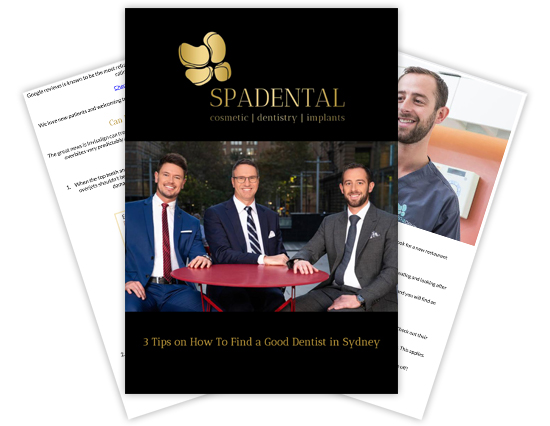Worried that you may have a dental infection? Five key ways to spot one with Spa Dental!

It can happen to the best of us; we are going about our day as normal and then we are hit with a toothache.
While this can be in response to a stimulus like a hot drink or ice, when dental pain occurs on its own, it can be very worrying. Typically, many people will just take pain relief and try to get on with their day. But, in some instances, that discomfort under your gum requires a more urgent course of treatment.
Now the million dollar question; how do you know if your toothache is an emergency or if taking some pain relief is the way to go? In this article, our team will explore how to determine the difference between dental emergencies and issues that will require a check-up, but not necessarily on the same day.
At Spa Dental, our dentist in Sydney CBD knows all about dental emergencies and will always aim to provide you with a same-day appointment if you have one. We will take great care to make you as comfortable as possible and will always try to send you home feeling pain-free and able to face the day. What more could you want from an emergency dental team?
But how do you identify a dental emergency at home? Here is a brief guide to help you identify one of the most common dental emergencies that our dentist in Sydney CBD sees; a dental infection.
Type of discomfort
An abscess will present with a throbbing or stabbing type of pain, under the tooth and in the surrounding area. This is a sensation that is difficult to ignore and will often prompt you to call our dentist in Sydney CBD for an emergency appointment!
Many patients also report a feeling of pressure too, so keep an eye on the symptoms you have with that toothache!
Is there swelling?
Swellings on the gum are key indicators of a dental infection and may be pea-shaped and directly under the tooth, or it may affect the entire row of teeth, which can be highly unpleasant!
This swelling also occurs suddenly and is painful to touch, so it differs from other dental swellings, such as gingivitis.
Discolouration
Another thing to look for are changing colours on the gum; if you notice a purple, blue or darker red hue to the gum with swelling and discomfort, you need an emergency dental appointment.
Sensitivity
Pressure based sensitivity indicates an irritation of the tooth’s root, and so, if one of your teeth cannot handle even a slight amount of pressure, it is likely you have an abscess. Extreme sensitivity to hot and cold stimuli is also an indicator of an underlying dental infection.
Other signs to look for
Some patients will experience other bodily issues along with a dental infection. If you have a fever, are having hot and cold flushes, feel sick or are being sick, have gastrointestinal looseness or feel dizzy, you require urgent medical attention. Typically, these issues will resolve when the infection is controlled with antibiotics.
DISCLAIMER
All dental treatments carry potential risks. Contact your local dental team for more information about the procedures mentioned in this article.




